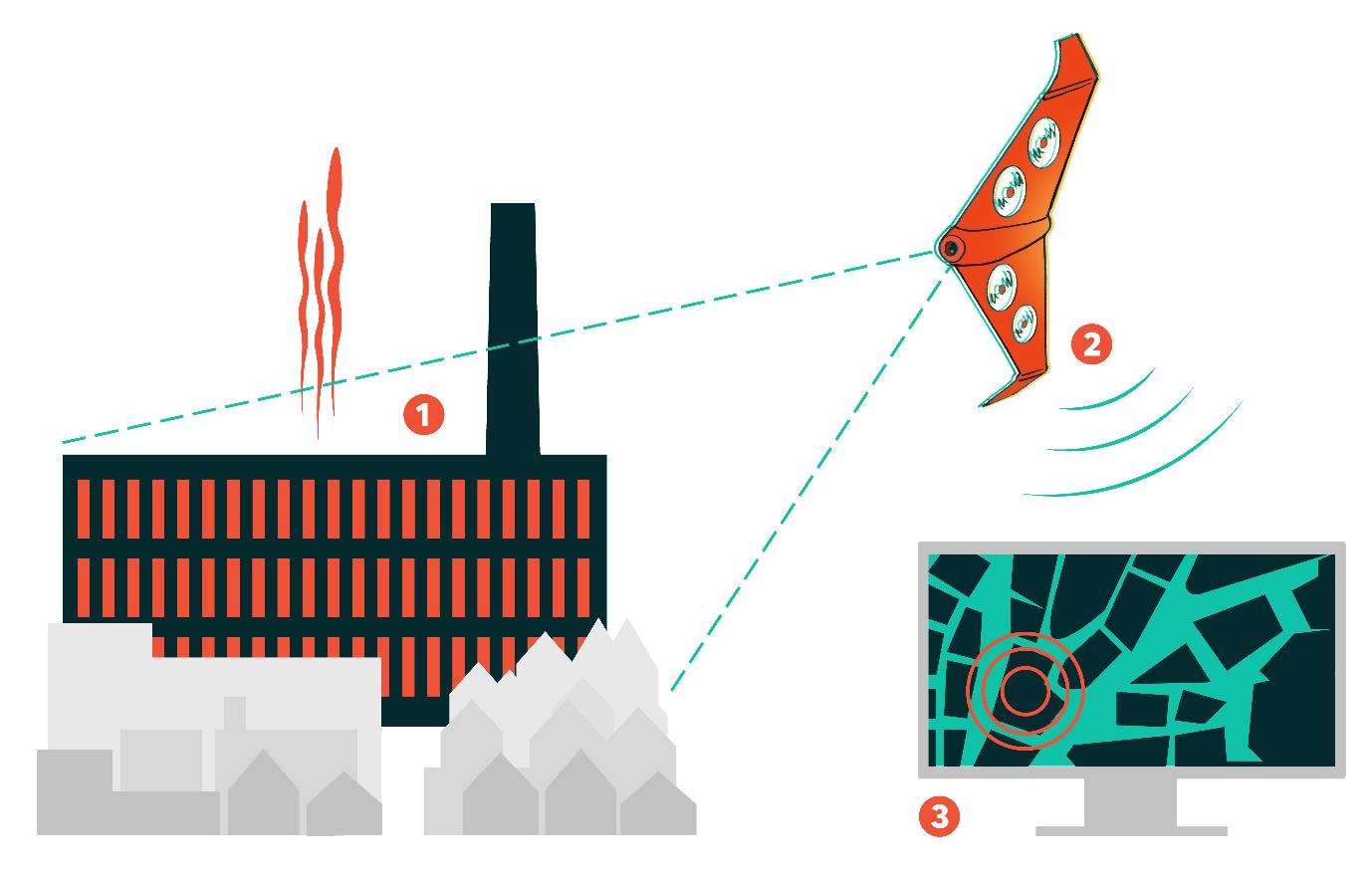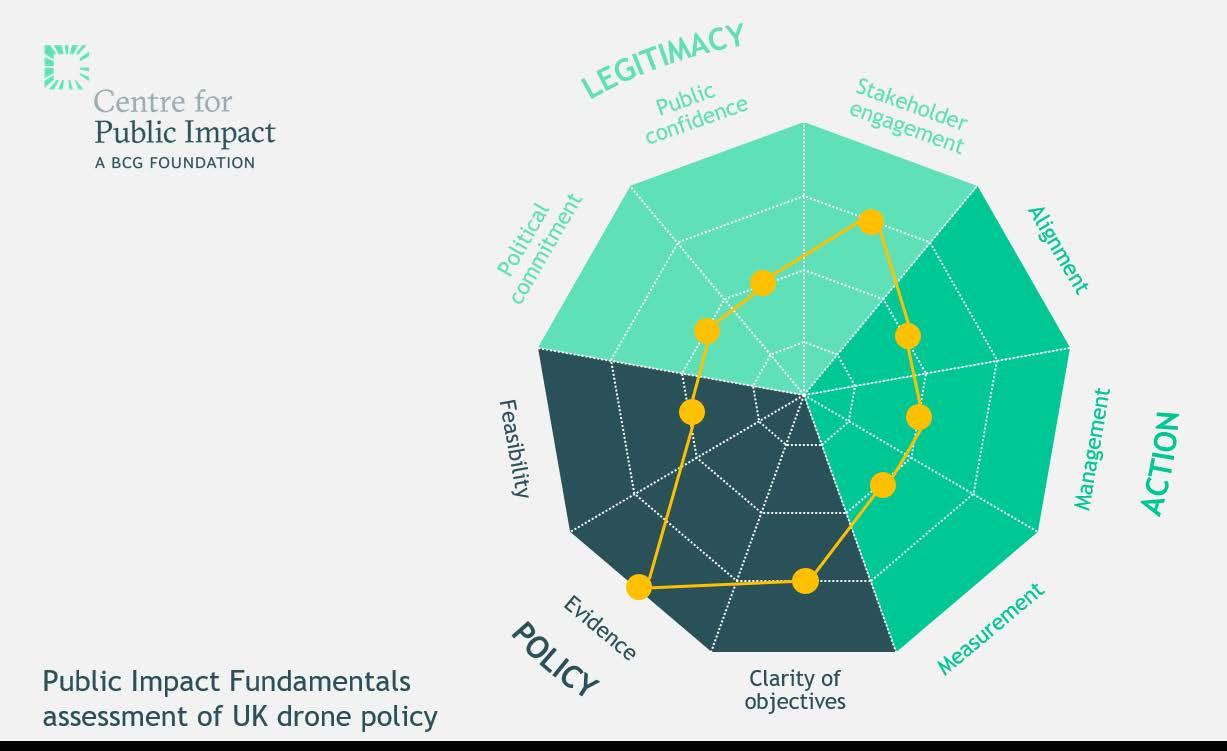
2 minute read
Construction and regeneration in Preston
Using drones for urban regeneration and infrastructure by supporting construction contractors
• Aerial imagery and sensing provides real-time information to construction managers • Greater information helps construction contractors complete projects quicker and at lower cost • Drones can help take workers out of risky environments • We find that this use case is both technically and economically feasible providing access to restricted airspace is made possible This use case focuses on drone services supporting construction work for urban projects in Preston. This would involve routine use of drones prior to and during construction, in order to survey sites and gather real-time information on the progress of works.
The drone (1) flies over the building site gathering high-resolution data on the ongoing construction work (2). This is fed back in real time to a building information management system for use by managers on site (3).
The key benefits to drones for construction and urban regeneration in Preston would be:
75
• Increased efficiency in construction site management. • Reduced waste. • Speedier recovery from incidents. • Reduced risk of injury for workers. • Better environmental management. In order to better understand the feasibility of this use case, we have focused specifically on a major forthcoming construction project in Preston that could be a test case for this use of drones. This is the M55 link road project, where a major new road will be built starting in 2019.
We have explored the use of a drone with cameras, thermal imaging and Lidar to support the construction work there. A drone launched from the construction site would fly in a regular pattern over the construction site in order to gather information on important topics such as the progress of work, location of materials and staff and any safety issues that might be arising.
Of the use cases we have looked into, this is the closest to being realised already: drones are already widely used in building projects. However to be used routinely and as regularly and intensively as we anticipate, the technology needs advances in communications, airspace management and, most of all, autonomous flight - and restricted airspace thanks to a nuclear fuel facility near the site would currently be very challenging to operate in.
Our economic analysis concludes that the use of drones in a construction project such as the M55 link road is highly economically beneficial: we model productivity gains of £15.7m over the 42 months of the project.
Use of drones for this purpose is therefore already feasible, with technological advances enabling wider and more efficient use in future.
76

Artist’s impression of a construction drone in Preston. Credit: ILYA
This is a summary of the full technical and economic analysis paper, which can be read in the appendices.
77









